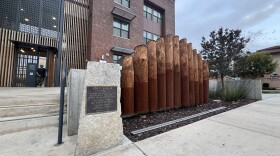It’s one of the most important transportation corridors on the west coast. 85,000 vehicles travel the roadway every day, according to the CHP. Today on KVPR’s Central Valley Roots – the story of The Grapevine – and how it got its name.
The story begins long before today’s superhighway, first with Native American trails, and later with the Spanish. By 1780 they had built El Camino Viejo (The Old Road) between Mission San Fernando and the San Joaquin Valley, via San Emigdio Canyon.
Then in 1853 prospectors found gold on the Kern River. That led to the construction of the Stockton – Los Angeles Road. It followed Old Tejon Pass into the San Joaquin Valley, east of today’s highway.
Things stayed largely the same until 1909 when California passed its first highway bond. After months of surveying and grading, the Ridge Route opened for motorists in late 1915. It took its name from its engineering – following ridgelines, with plenty of curves, switchbacks and fill sections that made it a harrowing drive.
The road was eventually signed as U.S. Route 99, but its path from Wheeler Ridge to Fort Tejon also gave it another name that remains to this day – The Grapevine. Oh and the name – it comes from the wild grapevines the grew in the canyon as the mountains meet the San Joaquin Valley – La Canada de las Uvas – Grapevine Canyon.






